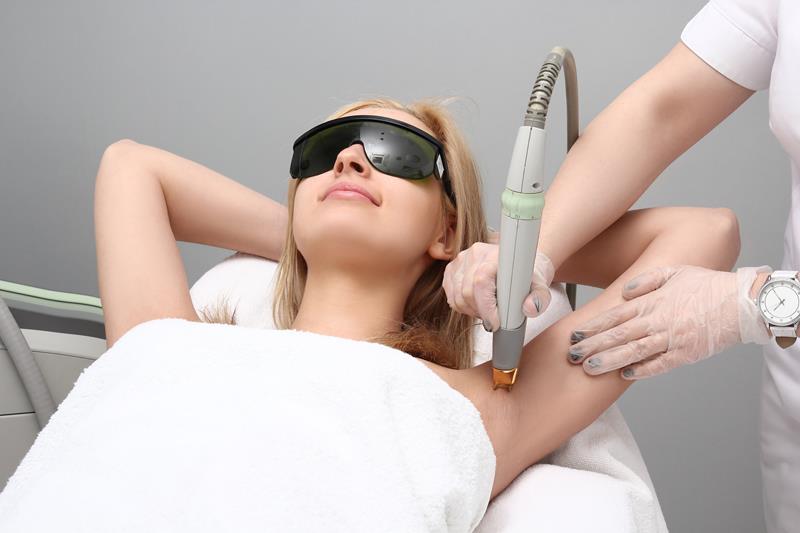
Laser Hair Removal
Laser hair removal is a safe and effective cosmetic procedure that uses pulsed laser energy to target and destroy hair follicles, reducing or eliminating unwanted hair while leaving the surrounding skin unharmed. Common treatment areas include the chin, upper lip, chest, underarms, back, bikini line, and legs.
Unlike temporary solutions such as shaving, tweezing, waxing, or depilatory creams, laser hair removal offers long-lasting results and is often preferred by individuals seeking a more permanent and less irritating method of hair removal.
Book OnlineCandidates for Laser Hair Removal
The laser targets melanin (pigment) in the hair, making it most effective for individuals with light skin and dark hair. Those with blond, red, gray, or white hair typically respond less well to treatment. However, advancements in technology have made laser hair removal safer and more effective for patients with darker skin tones, and ongoing research is improving outcomes for lighter-colored hair.
Benefits of Laser Hair Removal
- Precisely targets unwanted hair
- Quick treatment sessions
- Permanent or long-lasting results (up to 90% hair reduction)
- Generally painless, with minor discomfort described as a snapping sensation
How It Works
During the procedure, a topical anesthetic may be applied to the treatment area. A handheld device delivers controlled laser pulses that focus on the pigment in each hair follicle. Some systems also incorporate radiofrequency for enhanced results.
Hair grows in three cycles, but the laser is only effective during the anagen (growth) phase. Since not all hairs are in the same phase at the same time, multiple sessions are required—typically 3 to 5 treatments spaced 4 to 8 weeks apart. Treatment duration and number of sessions vary depending on hair texture and the size of the area treated.
Recovery & Aftercare
Temporary redness, swelling, or mild irritation may occur immediately after treatment, usually resolving within a few days. Applying cold compresses, moisturizers, or anti-inflammatory creams can ease discomfort. Patients should avoid sun exposure following treatment to protect the skin and ensure optimal healing.
Possible Side Effects
- Hair regrowth (often finer and lighter than before)
- Skin irritation such as redness, blistering, or crusting
- Temporary changes in skin pigmentation or texture
- Scarring (rare)
Any regrowth is typically addressed with follow-up sessions to maintain smooth, hair-free skin.
